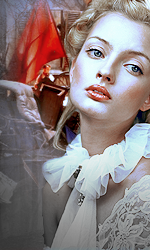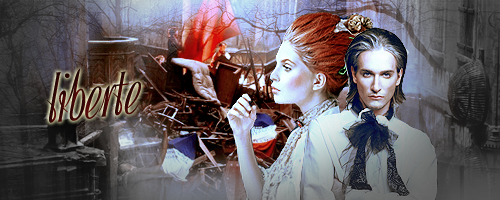Post by LIBERTE on Feb 24, 2013 7:04:22 GMT -5
The British Peerage has levels. Going down the scale these are:
Duke and Duchess
Marquess and Marchioness
Earl and Countess
Viscount and Viscountess
Baron and Baroness
The below may look, at first glance, to be complicated, but it is not necessarily so. Address: how to address a letter. Begin: how to begin the letter. Refer to: how to refer to them to a third party, or in the third person. When speaking to a peer directly, Dukes and Duchesses are 'Your Grace' all others are 'My Lord (or Lady)' or (very formally) 'Your Lordship (or Ladyship).
Peerage
Duke:
Address: His Grace the Duke of ...
Begin: My Lord Duke
Refer to as: Your Grace
Duchess
Address: Her Grace the Duchess of ...
Begin: Madam
Refer to as: Your Grace
Duke's Eldest Son and his Children
A duke's eldest son takes his father's second title as a courtesy title, and this is treated as if it were an actual peerage. His eldest son takes the grandfather's third title (if any), and is addressed as if he were a peer.
Duke's eldest son's wife:
Address as if her husband's title is an actual peerage.
Duke's Younger Son:
Address: Lord (Christian name and surname)
Begin: My Lord
Refer to as: Your Lordship
Duke's Younger Son's Wife
Address: Lady (husband's Christian name and surname)
Begin: My Lady
Refer to as: Your Ladyship
Duke's Daughter
Address: The Lady (Christian name and surname). The surname is her husband's if she is married.
Begin: Madam
Refer to as: Your Ladyship
If she is married to a peer, she is addressed according to her husband's rank and title, unless he is a peer by courtesy and uses his father's second title.
Marquess
Address: The Most Hon. the Marquess of ...
Begin: My Lord Marquess
Refer to as: Your Lordship
Marquess' Sons: Address as for Duke's sons
Marquess' Daughter: Address as for Duke's daughter
Marchioness
Address: The Most Hon. the Marchioness of ...
Begin: Madam
Refer to as: Your Ladyship
Earl
Address: The Right Hon. the Earl of ...
Begin: My Lord
Refer to as: Your Lordship
Earl's daughter: Address as for Duke's daughter
Earl's Eldest Son and Son's Wife: Address as if the courtesy title is an actual peerage
Earl's Younger Son and Son's Wife: Address as for Baron's son and his wife
Countess:
Address: The Right Hon. the Countess of ...
Begin: Madam
Refer to as: Your Ladyship
Viscount:
Address: The Right Hon. the Viscount ...
Begin: My Lord
Refer to as: Your Lordship
Viscountess:
Address: The Right Hon. the Viscountess ...
Begin: Madam
Refer to as: Your Ladyship
Viscount's Daughter, Son and Son's Wife: Address as for Baron's daughter, son and son's wife.
Baron
Address: The Right Hon. the Lord ... or The Lord ...
Begin: My Lord
Refer to as: Your Lordship
Baroness (in her own right) Address: The Right Hon. the Baroness ...
Baroness (wife of a Baron) Address: the Right Hon. Lady ...
(for both)
Begin: Madam
Refer to as:Your Ladyship
Baron's Son
Address: The Hon. (Christian name and surname)
Begin: Sir. (Eldest sons of Barons in the Peerage of Scotland are usually addressed The Hon. the Master of [peerage title].)
Baron's Son's Wife
Address: The Hon. Mrs. [husband's surname] or, if necessary for distinction (if two sons are married) the husband's Christian name should also be used.
Begin: Madam if she is the daughter of a Duke, Earl or Marquess, she should be addressed as such
Baron's Daughter
Address: The Hon. (Christian name and surname); if married to a commoner The Hon. Mrs. [husband's surname]. If married to a Baron or Knight, The Hon. Lady [husband's surname]
Begin: Madam
If she is the wife of a peer, or of the son of a Duke or Marquess, address as such.
Dowager
On the marriage of a peer or Baronet, the widow of the previous holder of the title becomes Dowager and is addressed as the Right Hon. the Dowager Countess of ... / The Dowager Lady ... As more than one Dowager may hold the same title, the Christian name is used as a distinction - e.g. The Right Hon. Charlotte Viscountess ...
Baronets and Knights
Baronet:
Address: Sir [Christian name and surname], Bart.
Begin: Sir
Baronet's Wife
Address: Lady [surname]
Begin: Madam
Refer to as: Your Ladyship
Knight Bachelor - Address as Baronet, except that the word 'Bart' is omitted.
On Introductions
A person would never introduce themselves to someone else (Mr Collins' faux pas in Pride and Prejudice, which Elizabeth Bennet tries to prevent.) One would always be introduced a mutual acquaintance - in the Assembly Rooms in Bath where Mrs Alle and Mr Tilney have no mutual acquaintance, Mr Tilney has the Master of Ceremonies perform the introductions, which was part of the MC's job description).
The lower-ranked person is introduced to the higher-ranked one... but only if the higher-ranked person requests it, or grants permission. (Towards the end of Pride and Prejudice, Lady Catherine de Bourgh does not grant Elizabeth permission, at first, to introduce Mrs Bennet to her, forcing an uncomfortable silence - people cannot talk without being introduced.
A proper introduction goes something along the lines of, "Lady Jane, please allow me to introduce my daughter/cousin/friend Miss Smith."
The eldest daughter is Miss Jones, her sisters are Miss Maria and Miss Emily. If Miss Maria is visiting relations in another part of the country, she becomes Miss Jones by courtesy. When she marries, Miss Maria will then become Miss Jones. The same rule applies for men - the eldest son is Mister Grey, his brothers are Mister James (of marriageable age) and Master Edward (still at school). The courtesy title 'The Honourable' is never used in person, only in writing (on cards and when addressing letters).
(This documentation written by Sharpie of RPG-D)
Duke and Duchess
Marquess and Marchioness
Earl and Countess
Viscount and Viscountess
Baron and Baroness
The below may look, at first glance, to be complicated, but it is not necessarily so. Address: how to address a letter. Begin: how to begin the letter. Refer to: how to refer to them to a third party, or in the third person. When speaking to a peer directly, Dukes and Duchesses are 'Your Grace' all others are 'My Lord (or Lady)' or (very formally) 'Your Lordship (or Ladyship).
Peerage
Duke:
Address: His Grace the Duke of ...
Begin: My Lord Duke
Refer to as: Your Grace
Duchess
Address: Her Grace the Duchess of ...
Begin: Madam
Refer to as: Your Grace
Duke's Eldest Son and his Children
A duke's eldest son takes his father's second title as a courtesy title, and this is treated as if it were an actual peerage. His eldest son takes the grandfather's third title (if any), and is addressed as if he were a peer.
Duke's eldest son's wife:
Address as if her husband's title is an actual peerage.
Duke's Younger Son:
Address: Lord (Christian name and surname)
Begin: My Lord
Refer to as: Your Lordship
Duke's Younger Son's Wife
Address: Lady (husband's Christian name and surname)
Begin: My Lady
Refer to as: Your Ladyship
Duke's Daughter
Address: The Lady (Christian name and surname). The surname is her husband's if she is married.
Begin: Madam
Refer to as: Your Ladyship
If she is married to a peer, she is addressed according to her husband's rank and title, unless he is a peer by courtesy and uses his father's second title.
Marquess
Address: The Most Hon. the Marquess of ...
Begin: My Lord Marquess
Refer to as: Your Lordship
Marquess' Sons: Address as for Duke's sons
Marquess' Daughter: Address as for Duke's daughter
Marchioness
Address: The Most Hon. the Marchioness of ...
Begin: Madam
Refer to as: Your Ladyship
Earl
Address: The Right Hon. the Earl of ...
Begin: My Lord
Refer to as: Your Lordship
Earl's daughter: Address as for Duke's daughter
Earl's Eldest Son and Son's Wife: Address as if the courtesy title is an actual peerage
Earl's Younger Son and Son's Wife: Address as for Baron's son and his wife
Countess:
Address: The Right Hon. the Countess of ...
Begin: Madam
Refer to as: Your Ladyship
Viscount:
Address: The Right Hon. the Viscount ...
Begin: My Lord
Refer to as: Your Lordship
Viscountess:
Address: The Right Hon. the Viscountess ...
Begin: Madam
Refer to as: Your Ladyship
Viscount's Daughter, Son and Son's Wife: Address as for Baron's daughter, son and son's wife.
Baron
Address: The Right Hon. the Lord ... or The Lord ...
Begin: My Lord
Refer to as: Your Lordship
Baroness (in her own right) Address: The Right Hon. the Baroness ...
Baroness (wife of a Baron) Address: the Right Hon. Lady ...
(for both)
Begin: Madam
Refer to as:Your Ladyship
Baron's Son
Address: The Hon. (Christian name and surname)
Begin: Sir. (Eldest sons of Barons in the Peerage of Scotland are usually addressed The Hon. the Master of [peerage title].)
Baron's Son's Wife
Address: The Hon. Mrs. [husband's surname] or, if necessary for distinction (if two sons are married) the husband's Christian name should also be used.
Begin: Madam if she is the daughter of a Duke, Earl or Marquess, she should be addressed as such
Baron's Daughter
Address: The Hon. (Christian name and surname); if married to a commoner The Hon. Mrs. [husband's surname]. If married to a Baron or Knight, The Hon. Lady [husband's surname]
Begin: Madam
If she is the wife of a peer, or of the son of a Duke or Marquess, address as such.
Dowager
On the marriage of a peer or Baronet, the widow of the previous holder of the title becomes Dowager and is addressed as the Right Hon. the Dowager Countess of ... / The Dowager Lady ... As more than one Dowager may hold the same title, the Christian name is used as a distinction - e.g. The Right Hon. Charlotte Viscountess ...
Baronets and Knights
Baronet:
Address: Sir [Christian name and surname], Bart.
Begin: Sir
Baronet's Wife
Address: Lady [surname]
Begin: Madam
Refer to as: Your Ladyship
Knight Bachelor - Address as Baronet, except that the word 'Bart' is omitted.
On Introductions
A person would never introduce themselves to someone else (Mr Collins' faux pas in Pride and Prejudice, which Elizabeth Bennet tries to prevent.) One would always be introduced a mutual acquaintance - in the Assembly Rooms in Bath where Mrs Alle and Mr Tilney have no mutual acquaintance, Mr Tilney has the Master of Ceremonies perform the introductions, which was part of the MC's job description).
The lower-ranked person is introduced to the higher-ranked one... but only if the higher-ranked person requests it, or grants permission. (Towards the end of Pride and Prejudice, Lady Catherine de Bourgh does not grant Elizabeth permission, at first, to introduce Mrs Bennet to her, forcing an uncomfortable silence - people cannot talk without being introduced.
A proper introduction goes something along the lines of, "Lady Jane, please allow me to introduce my daughter/cousin/friend Miss Smith."
The eldest daughter is Miss Jones, her sisters are Miss Maria and Miss Emily. If Miss Maria is visiting relations in another part of the country, she becomes Miss Jones by courtesy. When she marries, Miss Maria will then become Miss Jones. The same rule applies for men - the eldest son is Mister Grey, his brothers are Mister James (of marriageable age) and Master Edward (still at school). The courtesy title 'The Honourable' is never used in person, only in writing (on cards and when addressing letters).
(This documentation written by Sharpie of RPG-D)


